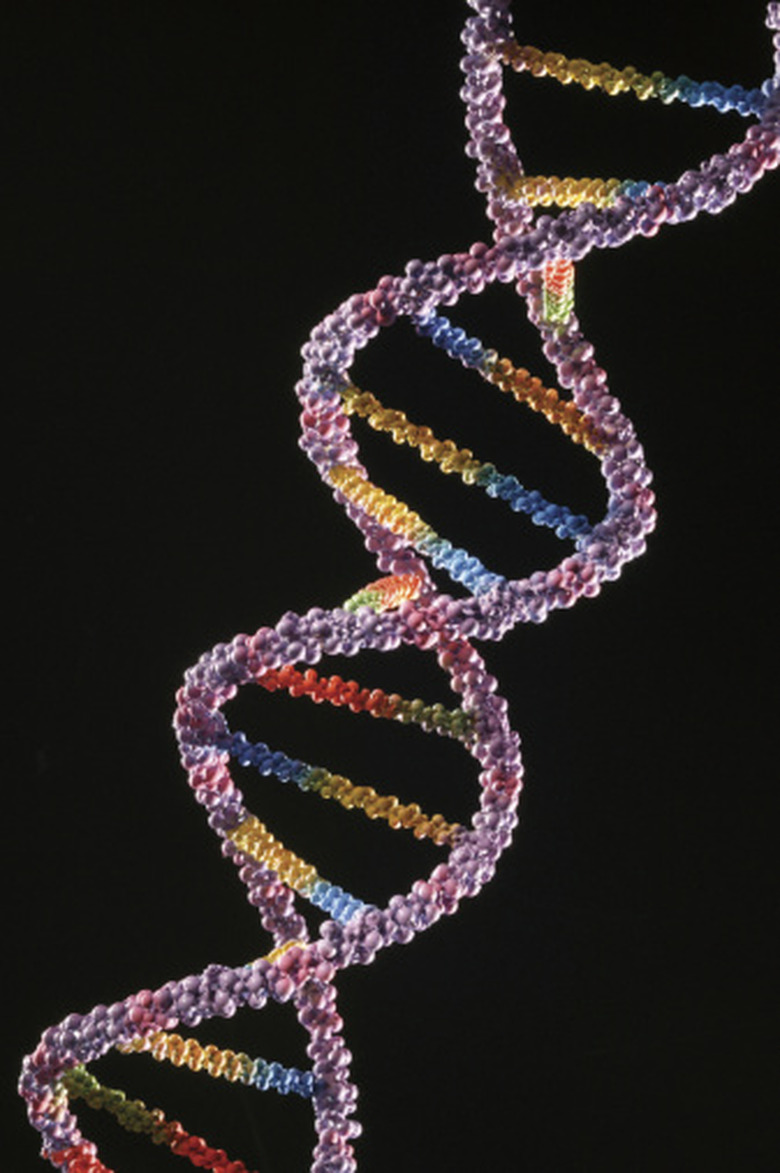Difference Between Recombinant DNA & Genetic Engineering
Genetic engineering is an area of molecular biology that involves manipulating the structure of genetic material also known as deoxsyribonucleicacid or DNA. Recombinant DNA, also called rDNA, is a strand of DNA that has been manipulated by scientists. Genetic engineering and rDNA go hand in hand; genetic engineering would be impossible without the use of rDNA.
DNA in Genetic Engineering
DNA in Genetic Engineering
DNA is a double-stranded molecule that contains genes, non-coding regions and gene regulatory regions. Genes are hereditary units that encode proteins and define the characteristics of organisms. In other words, genes make you different from other living organisms and other people; genes and DNA make you unique. Scientists use DNA to make rDNA in the laboratory. Scientists cannot generate DNA so they need to use natural DNA from different organisms to make rDNA. Recombinant DNA technology allows scientists to unite DNA from two sources: human DNA with bacterial DNA to produce the resulting proteins in cell cultures.
Generation of Recombinant DNA
Generation of Recombinant DNA
"Molecular Cell Biology," by H. Lodish et al., defines rDNA as a DNA molecule that is formed by joining DNA fragments from different sources. rDNA is produced by cutting DNA with enzymes, called restriction enzymes, that can cut DNA at a specific sequence. The cut DNA can be joined with another DNA, cut with the same enzyme, using another enzyme, called DNA ligase. Most commonly, the rDNA is cloned into a plasmid and transformed into an E. coli cell. E. coli will multiply the plasmid and the rDNA in it or produce the protein encoded by the rDNA.
rDNA and Genetic Engineering
rDNA and Genetic Engineering
The first rDNA molecules were generated in 1973 by Paul Berg, Herbert Boyer, Annie Chang and Stanley Cohen of Stanford University and University of California San Francisco. This is considered the birth of genetic engineering, according to "Cell and Molecular Biology," written by Gerald Karp. rDNA is the most important tool used by genetic engineers. Without rDNA there would not be genetic engineering.
Reasons to Manipulate DNA
Reasons to Manipulate DNA
DNA manipulation and generation of rDNA has several applications. The genes in DNA encode proteins that have several functions in our body. With the use of rDNA, scientists can produce proteins in the laboratory. For example, many vaccines, human insulin and human growth hormones are produced with rDNA technology in the laboratory. Before the "birth" of genetic engineering, insulin used to treat diabetes was isolated from pigs and cows.
References
Cite This Article
MLA
Hoven, Maria. "Difference Between Recombinant DNA & Genetic Engineering" sciencing.com, https://www.sciencing.com/difference-recombinant-dna-genetic-engineering-8623791/. 24 April 2017.
APA
Hoven, Maria. (2017, April 24). Difference Between Recombinant DNA & Genetic Engineering. sciencing.com. Retrieved from https://www.sciencing.com/difference-recombinant-dna-genetic-engineering-8623791/
Chicago
Hoven, Maria. Difference Between Recombinant DNA & Genetic Engineering last modified August 30, 2022. https://www.sciencing.com/difference-recombinant-dna-genetic-engineering-8623791/
